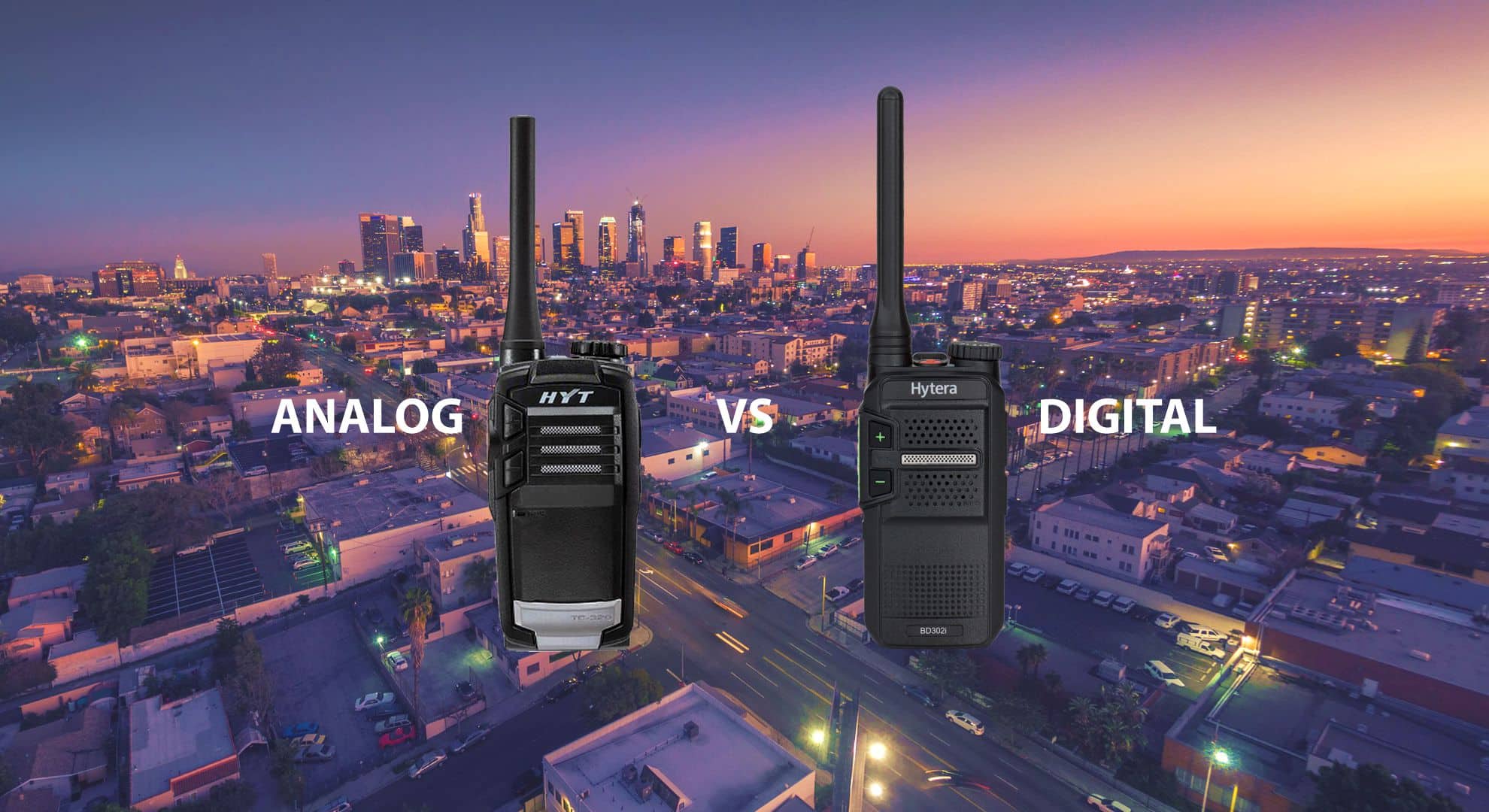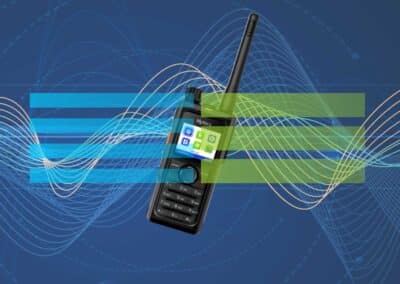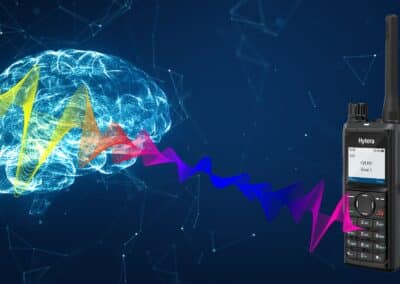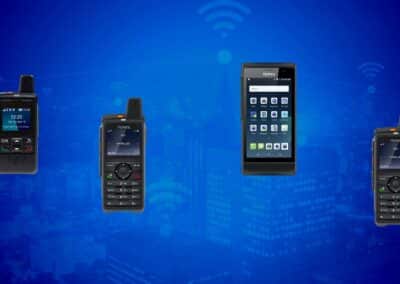Analog vs Digital Two-Way Radios
What are the differences between analog and digital two-way radios, and how operators of analog radios migrate to the advanced capabilities of digital radios?
Analog two-way radios have been the standard for decades. The analog Specialized Mobile Radio (SMR) standard, created by the FCC in the late 1970s, allows two-way communications in certain frequency bands for business and commercial systems. Analog radios have reached the peak of their advancement. They are simple to use and are often all that is needed on a personal level. When an individual or company needs a more advanced radio that is capable of messaging, location services and more, they look to digital radios.
In 2007, the Digital Mobile Radio (DMR) standard was introduced for the same types of applications using digital technology, and Hytera was a pioneering organization for DMR technology and digital migration. Under certain circumstances, analog is still a useful communication technology, however, DMR radios provide several advantages over analog.
Today, digital radios include Push-to-Talk over Cellular (PoC) radios that use the LTE infrastructure of Mobile Network Operators to provide nationwide radio network coverage. PoC radios share many of the features of DMR radios.
How Digital DMR Works
Both analog and digital radios send signals over a radio channel using a Very High Frequency (VHF) or Ultra High Frequency (UHF) carrier frequency wave.
In simple terms, analog radios use frequency modulation (FM) to encode a voice signal within a carrier wave. Your voice changes, or modulates, the frequency of the wave. The difference between the modulated frequency and the baseline channel frequency can then be demodulated by the receiving radio and turned back into a comprehensible voice message.
Digital radios do the same thing, but they have an extra encoding step before the voice signal reaches the carrier wave. The voice message is encoded into binary packets (ones and zeroes). These packets of numbers are then able to modulate the frequency of the carrier wave. The modulated frequency of a digital signal is not a continuous wave but instead an intermittent stepped change.
Digital Mobile Radio (DMR) is an open digital mobile radio standard defined by ETSI (The European Telecommunications Standards Institute), and it is applicable all over the world. Commercial products must comply to it, and users are not locked into proprietary solutions. The DMR standard Consists of DMR Tier I, Tier II and Tier III. Each tier provides different functionality and coverage range.
Learn more about the different DMR Tiers
Digital radios provide several advantages and additional benefits compared to analog radios:
Increased Channel Capacity
DMR uses the two-slot TDMA in a 12.5 kHz channel – this means that, as opposed to analog communication, you have two slots for communication instead of one. This time is essentially split up in milliseconds so that users don’t notice the time gaps, allowing a doubling of capacity for two channels instead of one.
Analog radios support up to 16 channels, and some analog radios have continuously rotating channel selector switches that can support up to 128 channels. DMR radios with advanced trunking technology can support hundreds of channels. Digital Push-to-Talk over Cellular radios have unlimited channel capacity.
Longer Range
A standard analog radio is going to decrease in signal the closer you get towards its maximum range, at which point, all you hear is white noise. On the other hand, a digital radio is going to remain much more consistent in sound quality regardless of distance to or from the maximum range.
An analog radio and digital radio with the same transmission power radio will transmit over the same distance, the digital radio will remain loud and clear all the way to the end of the covered area whereas the analog radio will gradually fade towards the end of the covered area.
With the use of repeaters, the range of digital radios can extend for hundreds of miles, and even without repeaters they are far superior in range to analog radios. Analog radios have continuously rotating channel selector switches that can support up to 128 channels. Unlike analog, digital transmissions can be in any form such as voice or data.
Clearer Audio
Analog signals are typically less tolerant to external noise interference, which means lots of unwanted background noise that can get in the way of crisp and clear communications. In other words, noise adds extra random information to analog signals. Each time the signal is amplified the noise is also amplified.
Digital radios feature real-time audio processing that focuses on speech and reduces any background noise. This means that the received audio quality is enhanced when compared to an analog radio system.
Digital technology also allows the receiving radios to auto-correct any errors in the received signal to maintain audio quality at the extremes of the radio coverage. Hytera digital radios contain unique technology that filters communication channels, fills in microscopic gaps, breaks in transmission, and minimizes error rates.
Digital radios can make your communications clearer by reducing unwanted background audio and focusing on the wanted speech. Increased audio quality in poor coverage areas reduces the need to repeat information and improves efficiency.
Longer Battery Life
Because they are more efficient, digital radios feature a longer battery life, and require less frequent charging or battery change out. The difference is substantial because digital radios extend operational battery life for several hours. That means more reliable communications and eliminates the need for staff to carry multiple batteries for a single shift.
Learn more about charging radios and extending battery life
Security and Privacy
One of the most important advantages is security. With digital radios, encryption can be used without degrading the quality of the audio, or the range at which the radio works.
GPS and other Advanced Features
Additional capabilities enabled by digital radio technology include GPS tracking, text messaging and data services, private calling, group calls, and safety features.
Trunking
Trunked Radio systems are two-way radio systems that optimize voice call or data traffic through a limited number of frequencies, maximizing the available resource for a large group of users. This is critical to ensure that communication is always instant and available for professional or enterprise level users.
DMR Tier III Trunked Radio utilizes repeater technology with a dedicated control channel, managed by a server. This allows resources to be brought together, controlling radio traffic for multiple user groups. Unlike other networks, DMR Tier III trunked networks deliver feature-rich, mission-critical communications over large geographic areas making it useful for enterprise level operations.
Digital radio repeaters can be connected over IP networks to enable wide-area radio network of multiple repeaters.
Analog to Digital Migration Path
Digital DMR radios can operate in digital mode and in analog mode. This dual mode capability allows users of analog radios to add digital radios that can communicate with the existing analog radios to provide a simple and low-cost migration path to an all-digital radio system.
Contact Hytera to learn more about Hytera DMR Radios and Push-to-Talk over Cellular Radios.



